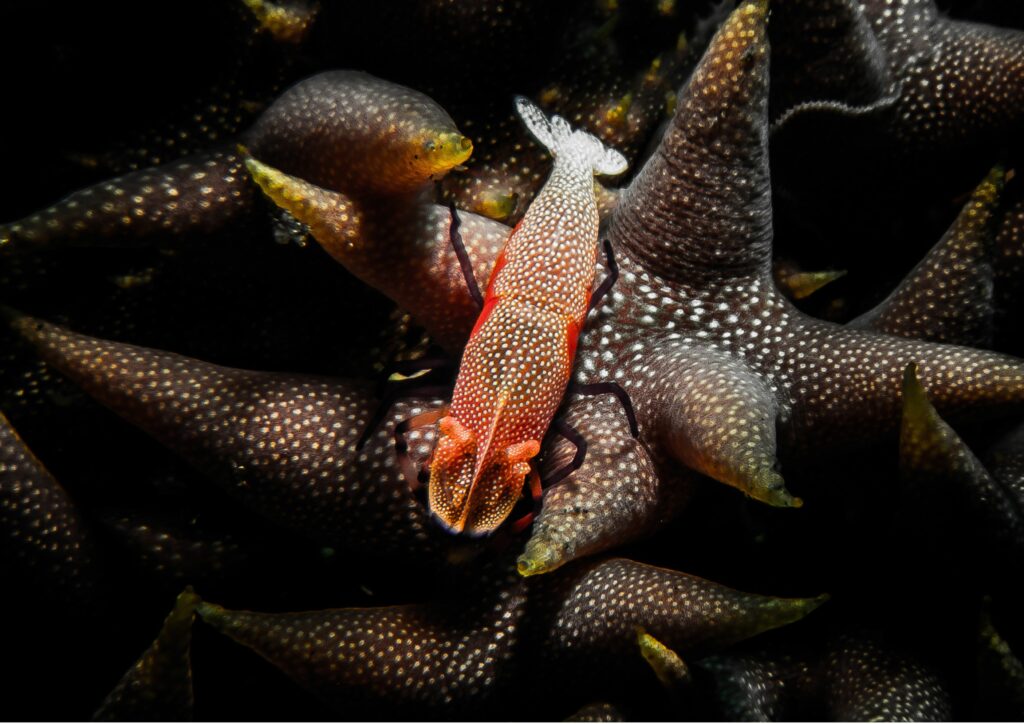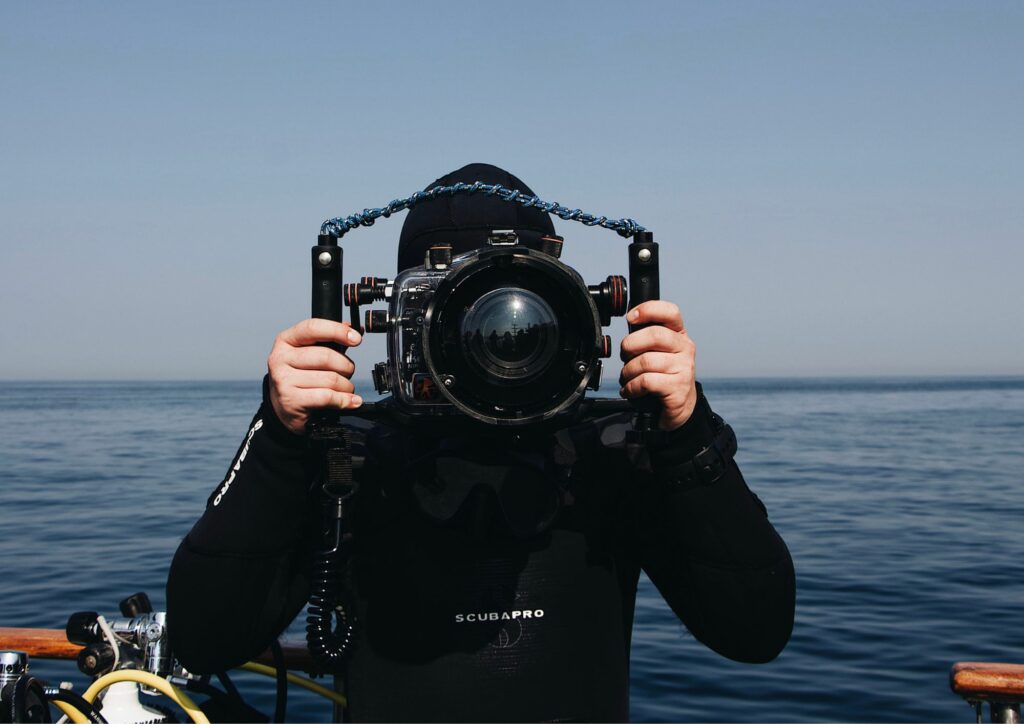Welcome to Underwater Photography in Bali, the captivating realm of Balinese marine life, where vibrant ecosystems and an abundance of aquatic wonders await eager photographers. This beginner’s guide will take you deep beneath the waves, exploring unique muck diving environments and exhilarating pelagic sites that highlight the extraordinary diversity of underwater life. Armed with practical tips and insights, you’ll not only elevate your underwater photography skills but also gain an appreciation for marine conservation efforts that are vital for preserving these underwater habitats. So, strap on your diving gear, grab your camera, and prepare to capture the hidden beauty that lies beneath the surface.
Understanding Balinese Marine Life
Understanding Balinese marine life is essential for both novice divers and underwater photographers. The rich biodiversity found in Bali’s waters is largely due to its unique geographical location, making it a haven for various species. From vibrant coral reefs teeming with colorful fish to the intriguing muck diving spots that host macroscopic creatures, each environment offers photographers unique opportunities to capture stunning images. Additionally, pelagic sites attract larger marine animals like manta rays and dolphins, providing awe-inspiring moments for both diving and shooting. Understanding these ecosystems can also foster a deeper appreciation for marine conservation efforts, encouraging responsible diving practices that protect these fragile habitats.
The Essentials of Muck Diving
Muck diving is a unique experience that allows photographers to explore the often-overlooked marine life found in sandy or muddy substrates. This type of diving is particularly popular in Bali, where vibrant critters such as nudibranchs, shrimps, and various species of fish can be spotted. For beginners, muck diving provides the opportunity to focus on smaller subjects, which can lead to stunning macro photography. Proper buoyancy control is essential to avoid disturbing the delicate ecosystems. Remember to bring along a good macro lens, as this will help capture the intricate details of the creatures. Muck diving not only enhances your photography skills but also promotes marine conservation by highlighting the importance of these often-maligned environments.
Exploring Pelagic Sites in Bali
Exploring pelagic sites in Bali offers an exhilarating experience for underwater photographers looking to capture the majestic beauty of open-water marine life. These locations are known for their rich biodiversity, hosting a variety of species from mesmerizing manta rays to playful dolphins. As a beginner, it’s essential to familiarize yourself with the currents and tides at these sites to ensure a safe and enjoyable dive. Investing in a quality underwater camera will help you capture stunning images that highlight the vibrancy of Bali’s pelagic ecosystems. Don’t forget about marine conservation; respecting these habitats is crucial for future generations to enjoy the wonders of underwater photography.
Equipment Recommendations for Beginners
For beginners in underwater photography, choosing the right equipment is crucial for capturing the vibrant marine life of Bali. A basic setup should include a waterproof camera or housing, a sturdy tripod, and possibly a macro lens for taking detailed shots of smaller creatures often found in muck diving sites. Experimenting with external flashes or strobes can enhance your images by illuminating the often dim underwater scene. Don’t forget accessories like a floating strap and a dive light for those pelagic site adventures. Investing in quality gear not only elevates your photography but also supports marine conservation efforts through responsible practices.
Techniques for Capturing Stunning Underwater Photos
Capturing stunning underwater photos in Bali requires a combination of the right techniques and equipment. First, consider using a dive flashlight to illuminate the vibrant colors of marine life, especially in muck diving areas where light penetration can be limited. Employing a wide-angle lens can help you capture entire scenes, showcasing large pelagic sites or massive coral formations. Additionally, maintaining an appropriate buoyancy is critical; practice your diving skills to minimize disturbances to delicate ecosystems. Lastly, framing your shots by including foreground elements can add depth to your images, making them more visually appealing for both personal memories and marine conservation purposes.
The Importance of Marine Conservation
Marine conservation is vital to preserving the stunning underwater ecosystems that Bali has to offer. The diverse marine life, including colorful corals, vibrant fish, and unique invertebrates, relies on healthy oceans. By practicing responsible underwater photography, beginners can help raise awareness about the fragility of these ecosystems. Simple actions, while doing underwater photography, such as avoiding direct contact with marine organisms and respecting their habitats, play a significant role in supporting conservation efforts.
Furthermore, promoting the beauty of Bali’s hidden underwater treasures through stunning images can inspire others to appreciate and protect marine environments. Additionally, participating in local conservation programs and supporting sustainable diving practices can greatly enhance the health of these ecosystems, ensuring that future generations have the opportunity to experience the magical underwater world of Bali.
Tips for Ethical Underwater Photography

When engaging in underwater photography, especially in rich ecosystems like Bali, it’s crucial to prioritize ethical practices. Start by maintaining a respectful distance from marine life to avoid disturbing their natural behaviors. Avoid touching or standing on coral reefs, as this can cause irreversible damage to these delicate structures. Additionally, limit your time at popular pelagic sites to reduce stress on the local ecosystem. Always be mindful of your buoyancy to prevent accidental damage while capturing stunning images. Lastly, consider participating in marine conservation efforts to help preserve these beautiful underwater habitats for future generations.
Communities and Resources for Aspiring Underwater Photographers
Becoming a proficient underwater photographer in Bali is not just about mastering your camera; it’s also about connecting with the right communities and utilizing available resources. Numerous forums and social media groups cater to aspiring underwater photographers, where you can share tips and experiences, find local dive guides, and discuss marine conservation efforts. Joining a photography club or participating in workshops can provide hands-on experience and networking opportunities. Moreover, many dive shops offer specialized classes focusing on muck diving and pelagic sites, providing the perfect backdrop to hone your skills. By engaging with these communities, you’ll not only enhance your photography skills but also contribute to the marine conservation dialogue, ensuring Bali’s underwater treasures are preserved for future generations.
Embrace the Beauty Beneath: Final Thoughts on Underwater Photography in Bali
As you embark on your underwater photography journey in Bali, remember that capturing the stunning array of marine life is not just about technical skills but also about fostering a deep appreciation for the ocean’s beauty. Muck diving and exploring pelagic sites offer unique opportunities to witness the vibrant ecosystem that thrives beneath the surface. As you fine-tune your underwater photography skills, never lose sight of the importance of marine conservation.
Each click of your camera should also serve as a reminder to protect these underwater photography wonders for future generations to experience and cherish. In conclusion, whether you’re a novice or a seasoned photographer, Bali diving presents a rich tapestry of underwater scenes just waiting to be explored. Your beginner’s guide has equipped you with essential tips, but the real magic lies in your willingness to dive deeper into this hidden world. Share your stories and images, inspire others to appreciate marine life, and contribute towards conservation efforts. Who knows, the next extraordinary moment you capture may also spark a greater purpose in protecting our oceans.

I must say, I’m impressed with this article. The tips and tricks provided are very helpful for someone who’s just starting out in underwater photography. I especially liked the section on understanding Balinese marine life – it’s amazing how much diversity can be found beneath the surface.
Thank you for your kind words about our article! We’re thrilled to hear that it has been helpful in guiding you through the basics of underwater photography. Understanding the marine life and ecosystems is indeed crucial for capturing stunning images, and we’re glad that section resonated with you. As a beginner, it’s great that you’re taking the first steps into this fascinating world. If you have any more questions or would like to share your own experiences, please don’t hesitate to reach out. We’d be happy to help and provide more tips and insights! Tel: +65 6734 9373, Email: [email protected]
I’ve been an avid fan of underwater photography for years and this article has definitely given me some new ideas to try out. The emphasis on marine conservation is also crucial, as we all know how important it is to protect our oceans.
Hi Ling Wong, it’s great to hear that you’re excited about trying out some new underwater photography ideas from our article! We completely agree with you on the importance of marine conservation – it’s crucial for protecting our oceans and the incredible marine life that calls them home. As an avid fan of underwater photography, we encourage you to share your own experiences and tips with us, as well as participate in local conservation efforts whenever possible. If you have any questions or need any advice on getting started with muck diving or pelagic sites, feel free to reach out to our team at Gill Divers anytime. We’re always here to help and support your underwater photography journey. Tel: +65 6734 9373, Email: [email protected]
I completely agree with Fatima! This article has given me so many ideas and inspiration to improve my underwater photography skills. The section on muck diving was particularly interesting, I had no idea there were such unique creatures lurking in the sand.
Hi Razak, thanks for sharing your thoughts on the article! We’re thrilled to hear that it’s inspired you to improve your underwater photography skills. Muck diving can be a fascinating experience, and there are indeed many unique creatures hiding in plain sight. As you continue to explore the world of underwater photography, remember to also respect and appreciate the marine life you encounter. Don’t hesitate to reach out if you have any questions or need tips on how to get started with muck diving. Tel: +65 6734 9373, Email: [email protected]